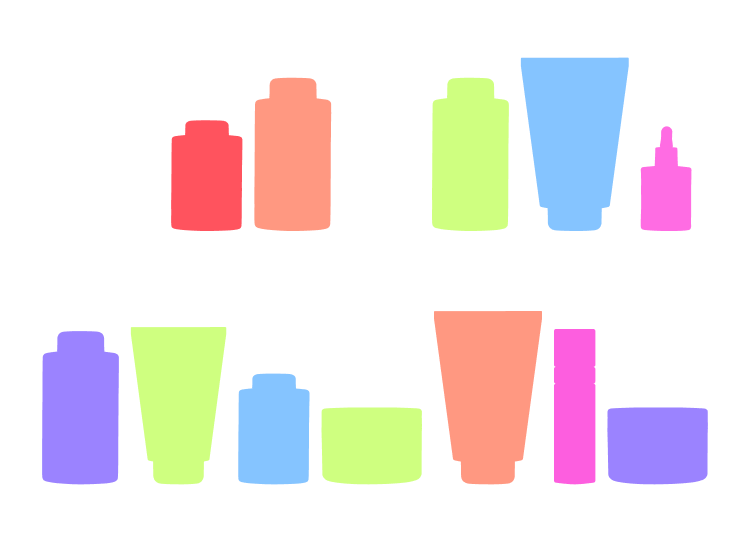My friend, today we are talking about the most controversial ingredient family in the hair care world: silicones. You will have heard about them a thousand times, but... what are they really? First things first, silicones are polymers composed of siloxanes, which have silicon-oxygen bonds, and depending on the length of the polymer and the radicals attached to the siloxanes, they can be volatile, soluble or insoluble.
In fact, it is very common to find them in many hair care (and skincare) products. So, is it true that they are toxic? Baby, here's a spoiler:

What types of silicones are there?
Let's get down to business. To understand why your conditioner, mask or serum contains silicones, you need to know how they work, and the types of silicones you can find:
- Volatile silicones (or cyclosilicones): have a low molecular weight and evaporate over the days. They are able to add shine to your hair and also make it easier to comb, while moisturizing it. They are the silicones of choice for fine hair, as they leave practically no residue. The most commonly used are Cyclopentasiloxane y Cyclomethicone.
- Water soluble silicones: are those that are present in rinse-off products, they are removed with water as they contain polar groups in their formula. They are used both in mild shampoos to minimize irritation in sensitive scalps, and in leave-in products, as they do not weigh down the hair. The best known are PEG-3 dimethicone, PEG-10 dimethicone, Dimethicone copolyol, y Dimethiconol.
- Water-insoluble silicones: okay girlfriend, don't panic, because even though they are not water soluble, they don't stay with you forever, the surfactants in your shampoo do remove them (specifically sulfates)! They are the ones with the highest molecular weight, the ones that adhere the most to the hair and moisturize it, and the most used in anti-frizz products because they form a water-repellent film. It is not recommended to use products containing this type of silicone on fine hair, as it can produce a build-up effect. build-up effectAlthough it sounds cool, it is not, as it refers to the accumulation of product in the hair, making it look caked and not cute at all. Here we highlight the Dimethicone, la Amodimethicone (this one in particular is the latest generation, and is positively charged, so it binds to the damaged areas of our hair, which are negatively charged) and Polydimethisiloxane, which would be very useful in frizzy, damaged, thick and dry hair.
What is the purpose of silicone in hair?
Basically, the function of silicones is: to beautify your hair and make it shinier, reduce frizz, protect from heat, facilitate combing, seal the cuticle and make the ends look less damaged and open. Interestingly, they appear in conditioner, mask and/or serum formulas, as their use in shampoos could make hair less loose and clean.
But wait...if they make such cool stuff, you might be wondering, "Why don't Goa Organics products contain silicones?". My dear, it's not because of what you think, or what you've been told, we've already told you that silicones are not toxic or harmful to your health, far from it. The point is that at Goa we don't use silicones for the simple fact that we feel that they have a make-up effect on your hair, that is, they don't help to rebuild the fiber and only mask the hair damage.
Even so, one of our best sellers does contain silicones, as it is necessary for it to fulfill its anti-frizz function. We're talking about none other than our sweetest serum, Cotton Lust, which in addition to coconut oil, argan, avocado, cotton and Indian gooseberry, contains insoluble silicones and volatile silicones, which give your hair a spectacular glow, leave the ends looking healthy, and fight frizz without leaving any residue.
Bestie, now you know, silicones are not your enemy!












